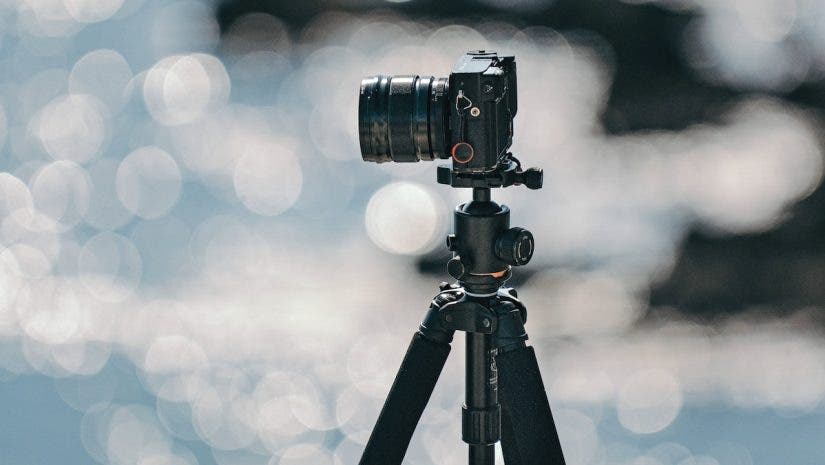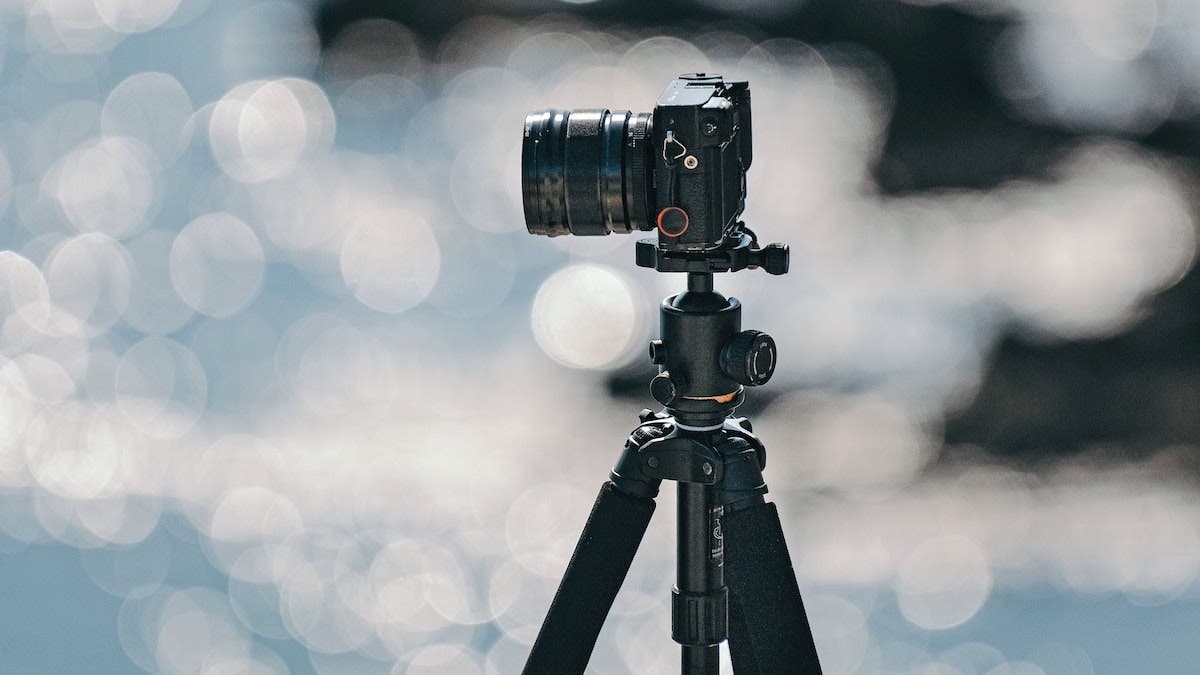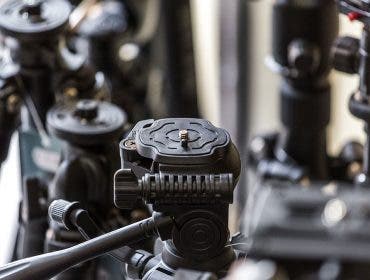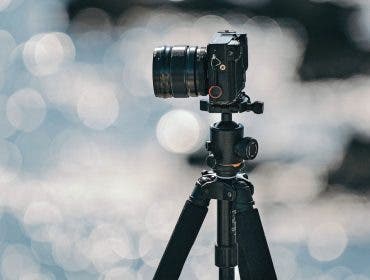A tripod is a photo accessory that often comes into discussion and does so for good reasons. Most photographers use one even when they specialize in adventure sports photography. Somehow they find the space in their backpack for a tripod and carry it anywhere they go. And that’s because they know for sure that some amazing shots will be ruined in the absence of the tripod. So, regardless of your preferred type of photography, you should keep the best tripod close to your camera gear.
Not all tripods are the same, and carrying the wrong one is as useless as not having one at all. For example, wildlife photographers look for different features in a tripod than studio fashion photographers. Check out the following camera tripod buying guide and make sure you choose wisely.
Why You Need a Tripod
Before buying a tripod, consider the reasons for which you need a tripod. Tripods are designed to support and stabilize the camera in a fixed position. Unlike holding the camera in your hands, mounting it on a tripod reduces the risk of shaking the camera while taking the picture. If you add a remote control for triggering the shutter, the risk becomes zero.
Therefore, you need a tripod anytime you have the risk of inducing a camera shake blur, such as when using long telephoto lenses or slow shutter speeds. Sports and wildlife photographers very often use a tripod. Macro photographers use one as well. Creating smooth long exposures in landscape photography is impossible without a tripod.
You also need a tripod to release you from the weight of the camera and lens. Studio photographers prefer to include a tripod in their photo setup and be free to move around it, arranging lights or their subjects. Landscape photographers use a tripod to fix the position of the camera and photograph the same scenery at different times of the day. So, there are plenty of reasons for using a tripod.

Tripod Characteristics to Consider
To choose the best tripod for you and your photographic workflow, consider the following characteristics and make a list of priorities.
Size
For tripods, size means height. A tripod has a minimum and a maximum height that helps photograph the subject from where you want. If you photograph tiny subjects (e.g., macro photography), you want the tripod to be able to get as low to the ground as possible. If you photograph subjects far away (e.g., landscapes, wildlife, sports), you want the tripod to reach your eye level and provide a comfortable position.
Collapsed size
Collapsed size becomes important when you carry the tripod to the location. If you work in a studio, it doesn’t really matter. But if you carry your gear on top of a mountain, how small the tripod can get affects your performance and workflow. Also, it affects your ability to reach the top.
Weight
Similar to collapsed size, how much the tripod weighs is an issue when you carry the tripod with you. A lightweight tripod is key for landscape and travel photography. Weight is determined by the tripod’s material. Carbon fiber tripods are lighter than other materials.
Load capacity
Your tripod should be able to support the weight of your camera, lens, filters, lens hood, eternal flash, and other accessories you might mount on the camera (e.g., external microphone or monitor). Consider your heaviest gear and ensure the tripod is up for the challenge.
Head type
Tripod heads allow you to control the angle and movement of the camera. You may want a ball head to achieve almost any angle, a pan and tilt head, a gimbal head for steady wildlife or bird photography, a fluid head for smooth panning and tilting, or a panoramic head. Consider the level of flexibility you need and how fast you have to adjust the position of the camera.
Feet
The tripod’s feet provide stability and grip. If you often place the tripod on a rough or slippery surface, you have to consider the quality and material of the feet. Most tripod feet are made of rubber, but you can also find tripods with spikes or claws instead of regular feet.
Leg Locks
The quality of leg locks determines the usability and reliability of the tripod. You can choose between three options: twist locks (secure, weather sealed, harder to use), screw locks (slow to operate, the most secure option), and flip locks (fast, easy to operate, not very reliable).
Common Material
The tripod’s material determines the weight and reliability of the product. You can choose between aluminum (durable, lightweight, relatively strong), carbon fiber (super lightweight, no vibration, sensitive to impact), and wood (sustainable, no vibration, heavy, slow to operate).

Types of Tripods
Once you know your priorities in terms of characteristics, you can start browsing through the types of tripods available on the market. Each of them is designed for a particular purpose and kind of photographer. Find the one that fits your workflow and checks your list of priorities.
Pocket Tripods
A pocket tripod is small, ultra-lightweight, and ergonomic. They may have foldable and flexible legs that provide grip on uneven surfaces. The smallest ones have the dimensions of two credit cards put together and can fit your wallet.
They are the best choice for travel photographers, smartphone photographers, and selfie amateurs. However, some pocket tripods can only hold a smartphone or a compact camera. Thanks to their small size, they keep the camera very close to the ground, which makes them perfect for photographing tiny subjects.
Tabletop Tripods
A little bit bigger than pocket tripods, tabletop tripods can support the weight of a DSLR. They are usually short (the legs don’t extend too much) and are often used for macro and product photography. Most of them allow you to adjust the legs individually, have flexible or bendy legs, provide good grip on any surface, and come with a general-purpose ball head.

Travel Tripods
Travel tripods are tripods you want to and can take with you anywhere. Although they have high maximum heights, they are designed for backpacking. Travel tripods are made from the lightest materials, have small folded lengths, are slim, and work very well in the harshest conditions. Usually, they are dust, dirt, and weather resistant as well. You can find them in landscape photographers’ backpacks.
Medium Duty Tripods
If you have a heavier camera or use a medium telephoto lens, you will need a tripod able to support the load. Although lightweight and compact, a travel tripod can’t hold heavy loads. Medium-duty tripods focus on stability, adjustability, and comfort. You can trust them with any task, on any terrain. They are popular amongst photographers who don’t have to carry their gear on foot or long distances, such as event photographers.
Sturdy Duty/Studio Tripods
The most reliable, sturdy, and stable tripods are used in studios or for photographic genres that require heavy ultra-telephoto lenses (e.g., bird photography, sports photography). They are heavy and expensive, but they are the only way you can stabilize a DSLR or with an ultra-telephoto lens, a medium format camera, or heavier video gear. Furthermore, they are resistant and last for a lifetime.
Tripod Recommendations
Whether you’ve chosen a tabletop tripod, a heavy-duty one, or anything in between, we have the best options for you. Here are our choices for the best camera tripods.
Best Tabletop Tripod
Explorer 2-Section Carbon Fiber Table Top Tripod is the best choice for a tabletop tripod because it is lightweight, compact, and versatile. You can use it with smartphones, compact cameras, and mirrorless or DSLRs with mid-range focal lengths lenses. The tripod can hold up to 3kg (6.6lbs) and comes with a ball head that provides 360-degree panoramic rotation. The legs have two sections and are adjustable. It’s made of carbon fiber and weighs 408g (14.4oz).
Best Travel Tripod
We love the 3Pod TREK Series Carbon Fiber Travel Tripod because of its solid carbon fiber design, multipurpose ball head, high load capacity (11.8kg (26lbs)), and short folded height (42cm (16.5 inches)). The maximum height of 156cm (61.5 inches) is perfect for nature and landscape photography. The tripod features twist locks, four leg sections, a center column, and a universal mounting screw for cameras of all sizes. You can even transform it into a monopod!
Best Medium Duty Tripod
Manfrotto Befree Advanced Lever 4-Section Aluminum Travel Tripod is a multipurpose tripod, easy-to-use and reliable. It’s made of aluminum, comes with a ball head, provides perfect stability on all types of terrain, and includes Manfrotto’s new flip locking mechanism called the QPL Travel lever. The tripod can reach a maximum height of 151 cm (59.45 inches) and a minimum of 40 cm (15.75 inches). It’s heavier than a regular travel tripod (1.59kg (3.5lbs)) but provides the solidity and reliability one needs for all types of photography.
Best Sturdy Duty/Studio Tripod
If you need performance and strength, Vanguard VEO 3+ 263CP Professional Carbon Fiber Tripod is for you. The tripod is ready for any heavy-duty job with a 3-way pan head, center column, solid twist locks, and a removable hook for hanging weight and improving stability. It comes with both rubber and spiked feet. The central column moves 360-degree in any direction and can be used as a monopod. You can use it to shoot from your eye level as it has a maximum height of 1.74 m (68.3 inches) or 1.84m (72.25 inches) as a monopod. The tripod supports up to 6kg (13.2lbs).
Conclusion
A tripod may be your best friend when you need to adapt fast to an environment or a situation. It allows you the freedom to explore new creative ideas, try extreme camera settings, or hold other accessories while photographing or filming your subject. It provides stability to the camera and comfort to the photographer. Find the one that fits your workflow and invest in high-quality products. You won’t regret it.




